Daylilies in landscape design: interesting options
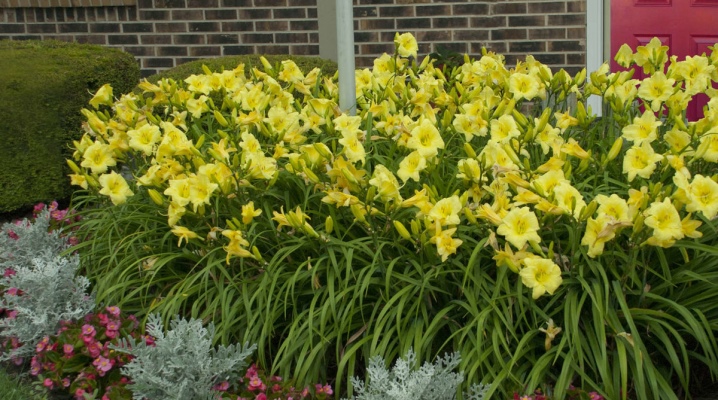
Daylily refers to the type of perennial decorative flowers that will decorate any summer cottage or garden plot for a long time, and without much effort. In addition to the fact that this flower is very beautiful, has a delicate, pleasant aroma, it is also quite unpretentious. Once you have planted the daylily correctly, and only from time to time adjusting it a little, you can enjoy the view of your flower garden for a long time.

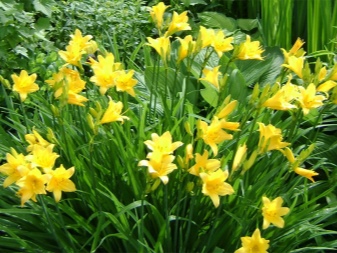
Registration rules
Experienced gardeners always plan their site when they plan to plant perennial crops. That's why if you want to break a flower bed or make a flower garden with daylilies, you must first find out as much as possible about this plant: what species exist, in what place it will grow better, how it will be combined with other plants and the general appearance of the territory as a whole.
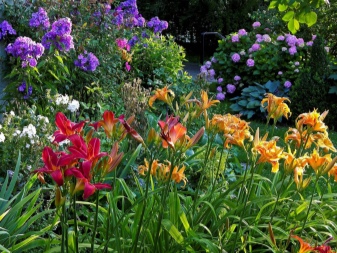
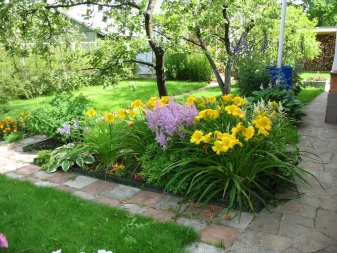
There are about 30 thousand different types of daylilies. These are mainly tall flowers (the height of some species exceeds 1 m).
On a high stem, buds are formed, which gradually bloom one after another. One bud blooms for only a day, but since there are many of them on the peduncle, the plant blooms for almost a month, or even longer. Daylily leaves are narrow and long, growing from the base of the root, forming a rather large, voluminous bush. One adult plant requires about one meter of free space. And this must be taken into account when forming a flower garden with daylilies.
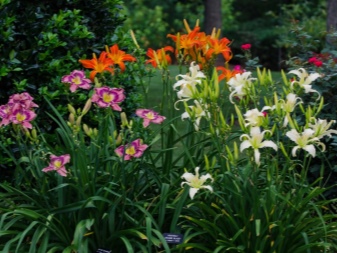
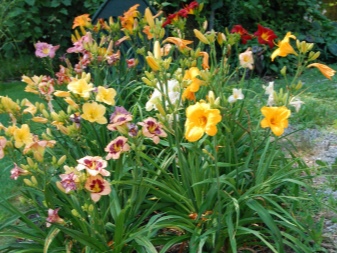
And also when planning the planting of daylilies, you need to remember that although this plant is relatively unpretentious, it is still better to choose a sunny place. Most often, brown-orange and yellow daylilies grow in our climatic zone. But there are many other varieties with all sorts of shades, there are even dark purple, almost black flowers.
Light flowers are planted in the sun, but dark flowers with reddish shades are best placed in partial shade, since the color of the petals fades a little in the sun and loses its original color. The only condition for good flowering of the daylily is at least 6-7 hours of sunlight.
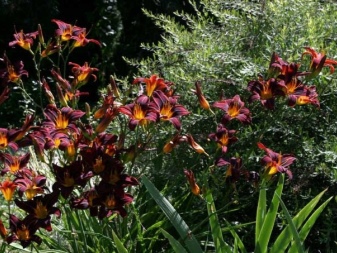
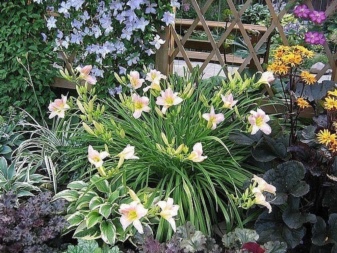
Daylilies look good both alone and in combination with other plants and flowers. Solitary landings are called tapeworms. Daylilies of the same variety can be planted in them, or several species of suitable color can be selected. In order for the flower garden to please the eye throughout the summer, daylilies can be combined with other flowers, but when choosing neighbors, take into account that daylilies bloom mainly in June-July. Although it still depends on the type of plant, for example, the Middendorf daylily is considered the earliest and begins to bloom as early as May.
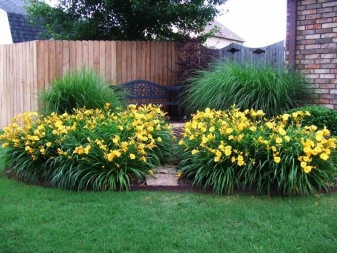
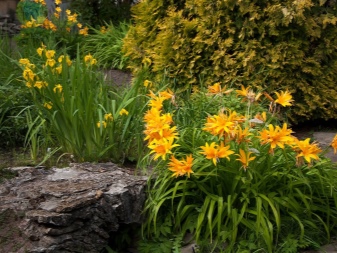
Separately, we can note the fact that the flowers of daylilies do not have monochromatic colors. There are several shades in the petals, and it happens that the core is painted in a contrasting color and has a clear outline, or, conversely, the color smoothly changes its shade from the center to the edges of the petals. Such color features of daylilies can be used for any design solution of a flower garden.
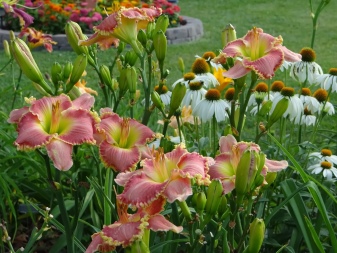
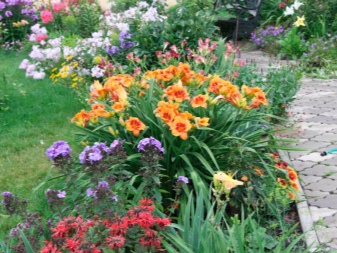
Next to what to plant daylilies?
Daylilies are successfully used in landscape design of homestead, summer cottage, garden plots, as well as in city parks, squares, squares. They can be planted against the background of the building wall, and along the paths, near the pond, or make a separate flower bed among the lawn. Alpine slides and rockeries can be made with low-growing varieties.
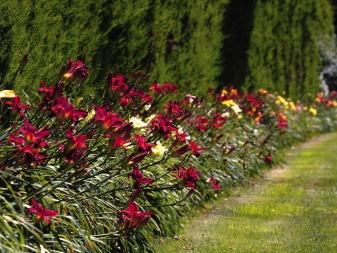
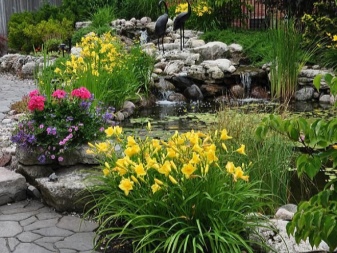
When planting daylilies near buildings and garden structures, it is better to choose varieties whose color will stand out in contrast against a light or dark background of the wall.
You can combine several types of daylilies. Plant the tallest ones directly against the wall. Looks good when daylilies are planted next to bushes, especially if the color of the leaves of the shrub is different. For example, the emerald green of the daylily next to the red-leaved barberry will look very beneficial. Low shrubs, such as mock orange, elderberry, privet, will create a good composition with both tall and dwarf varieties of daylilies.
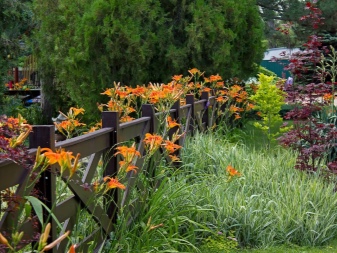

You can arrange a garden path very nicely, especially if it is not straight. Only plant flowers not from the edge, but a little deeper, since daylilies grow and subsequently can close a significant part of the path. And you can also decorate the shore of a pond, pool or any body of water, especially since daylilies are moisture-loving plants that originally grew in tropical rainforests.
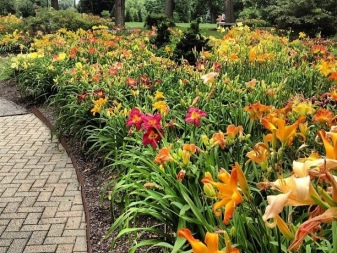
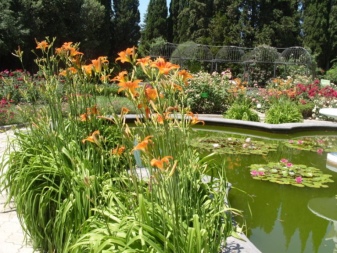
You can make a flower bed in the middle of the lawn. On the flat green surface of the grass, tall flowers will serve as a wonderful decoration for a large space of the lawn. You can grow single solitary bushes or combine them with other flowers, for example, phlox, and pick them up in the same color scheme.
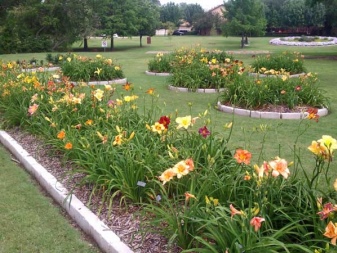
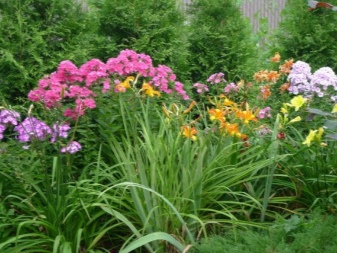
For those who do not like high fences and fences on their site, we can recommend creating a kind of hedge from daylilies, planting them in a row at a close distance from each other. Or make a hedge from acacia bushes, and plant yellow daylilies in the foreground.
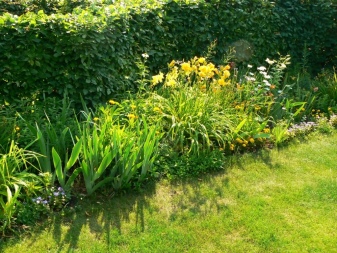

Another use for these colors is alpine slides. In this case, it is recommended to plant plants not at the very top, but on a slope, it is advisable to use low-growing varieties and in small quantities, because usually low ground cover plants are planted on such hills. Currently, miniature varieties of daylilies have been developed with thin leaves, like those of cereal plants, the height of which does not exceed 25 cm, and small flowers no more than 4 cm in size (Penny Earned, Penny's Worth). They grow in lush bushes and are perfect for rockeries.
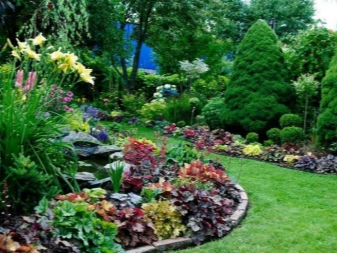
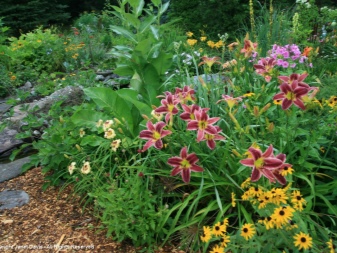
Another big pleasant plus of daylilies is their wonderful delicate aroma. Therefore, these beautiful flowers can be used to decorate the recreation area. After a sultry July day in the evening it is very pleasant to sit somewhere in a gazebo, on a cozy garden bench or swing on a swing. There is a particularly fragrant, fragrant type of daylilies (Siloam Double Classic), which is not inferior in beauty to roses.
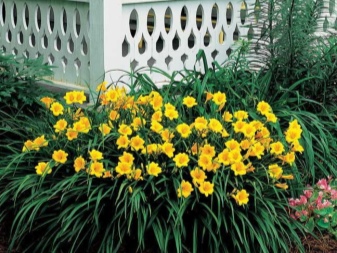

Combination with other plants
Experts in floriculture and horticulture advise to combine flowers and plants in a flower bed in such a way that flowering does not stop from early spring to late autumn. Daylilies perfectly fit into the design of any flower garden, since their flowering occurs at the very heart of summer, and it takes quite a long period of time.
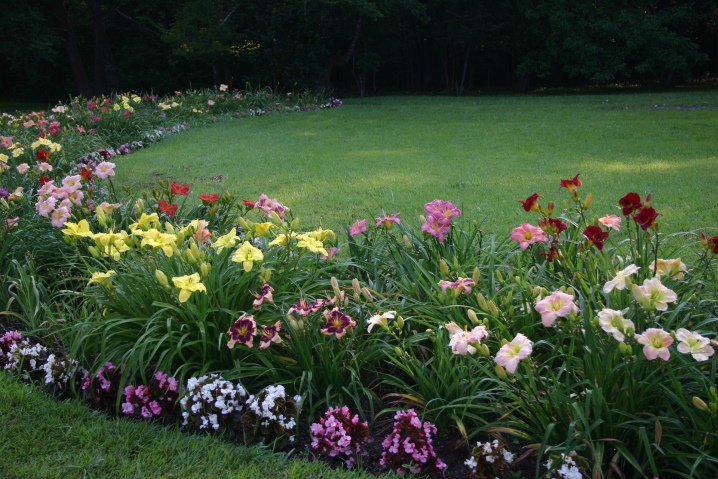
Daylilies can be planted next to bulbs that bloom in early spring. In this case, it must be borne in mind that hyacinths, tulips, daffodils are much lower than daylilies, so they should be in the foreground.
After the first spring flowers, irises begin to bloom, and the period of their flowering is combined with the beginning of flowering of daylilies. There are many different varieties of irises and, therefore, options for combining daylilies with them. You can choose varieties in the same color scheme, for example, sunny yellow, or, conversely, create contrasting compositions.
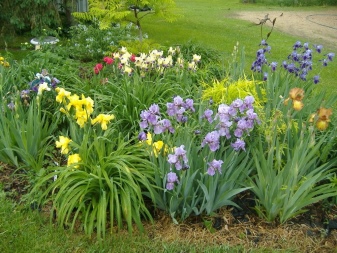
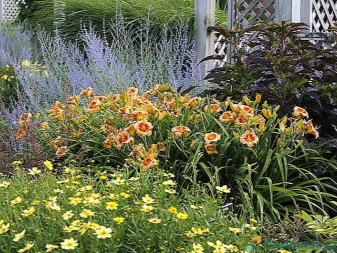
Some experts suggest planting daylilies in a rose garden, as many roses rest for a while after the first wave of flowering, and at this very time, daylilies will support and "save" this noble flower garden.

Oddly enough, daylilies are miraculously combined with coniferous plantations. Thuja, juniper, larch, pine with fir trees will serve as an excellent background for daylilies. Dark green needles and bright, for example, reddish-orange flowers of daylilies will generally look good.

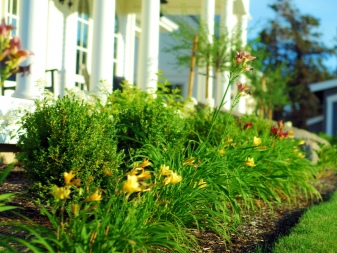
Well, the classics are daylilies with hosts. This combination is considered by landscape designers to be the safest option in the design of shady corners of the infield.


In August, closer to autumn, daylilies gradually wither, flowering stops, the leaves wither, die off and gardeners, in order to preserve the neat appearance of the mixborder, combine with daylilies various types of cereal plants, yarrows of all kinds of shades, loosestrife, echinacea, the so-called dried flowers.
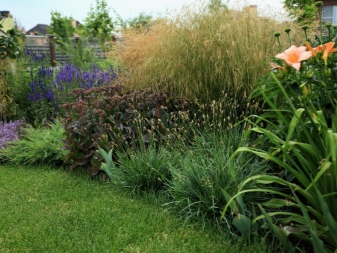
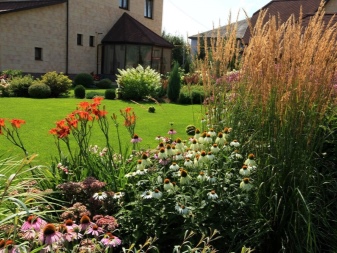
Accommodation guidelines
With an experienced gardener, each plant in the garden is located so correctly that it is not necessary to transplant it after a while, to change its place, if suddenly it has not taken root or has grown over time and there is not enough space, or, even worse, the plant begins to interfere, closes the paths, for example ... Therefore, when planting perennial daylilies that can grow in one place for ten or more years, it is worth considering the choice of their place of "residence" more carefully.

Experts give some recommendations on the placement of daylilies in the garden and at the dacha, fulfilling which you can enjoy the annual exuberant flowering of your favorites.
- Preference is given to sunny plots of land. The sun is the key to the flowering of the daylily. In extreme cases, you can land in partial shade, but with the condition that the sun's rays will illuminate this area for at least 6 hours.
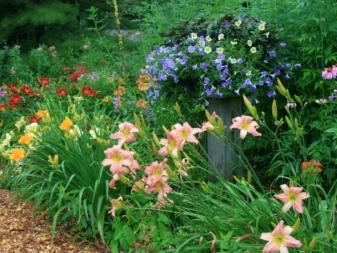
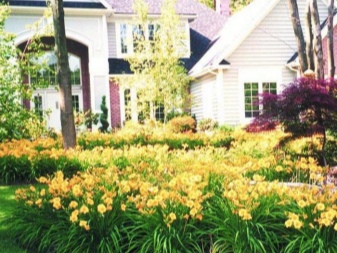
- This plant loves good watering and feels quite well on the banks of water bodies. If the landscape of the site contains ponds, lakes, pools, then daylilies will serve as their perfect frame.

- As for the terrain and soil, preference is given to small hills and gentle slopes. - lowlands with stagnant water will be detrimental to this flower. Daylily grows wild in nature in almost any soil, but decorative varieties are best planted in nutrient soil with neutral acidity. If the soil at the dacha does not meet these requirements, when planting a plant, it is necessary to add any additional components to the holes to help neutralize the acidity of the soil (ash, lime, sand, peat and others), as well as a universal fertilizer.
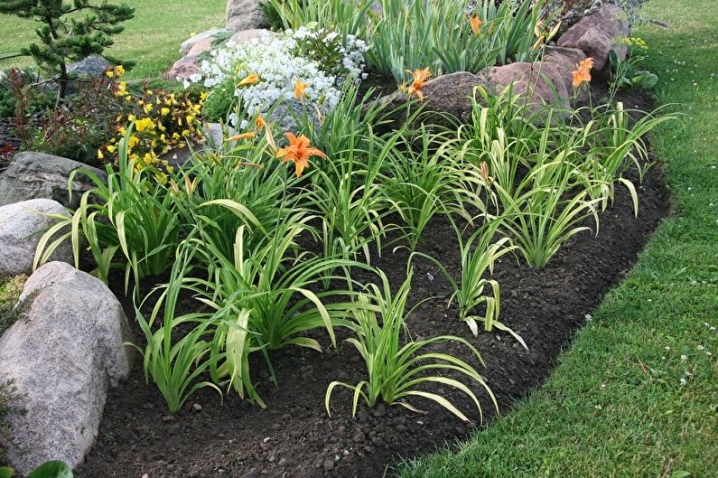
- When planting, the size of an adult plant must be taken into account. Daylilies form rather large bushes with spreading leaves.
So that in the future they do not close the paths or nearby flowers growing in the flower bed, you need to allocate at least 0.7 square meters of land for each daylily bush.
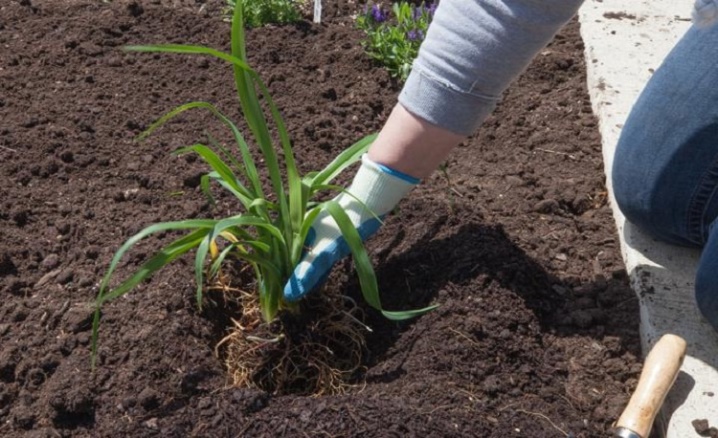
In addition to all of the above, many summer residents use little tricks to disguise any construction flaws, an opening in a wall or fence, or an unsuccessful garden path with the help of these beautiful large flowers. Why not, because beautiful daylilies will really decorate any space.
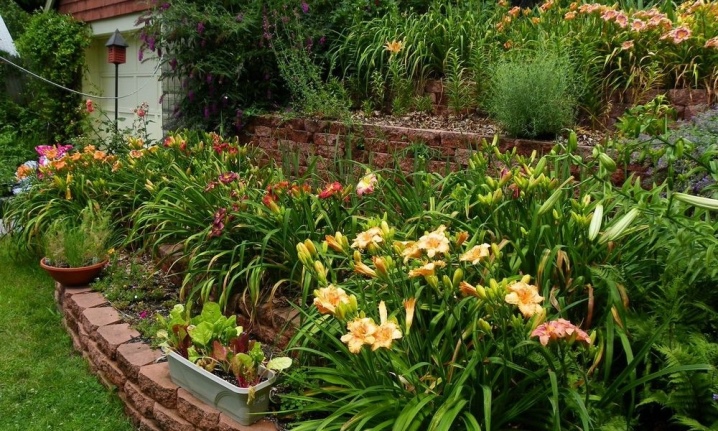
For information on what kind of landscape tricks exist using the daylily, see the next video.




































































































The comment was sent successfully.